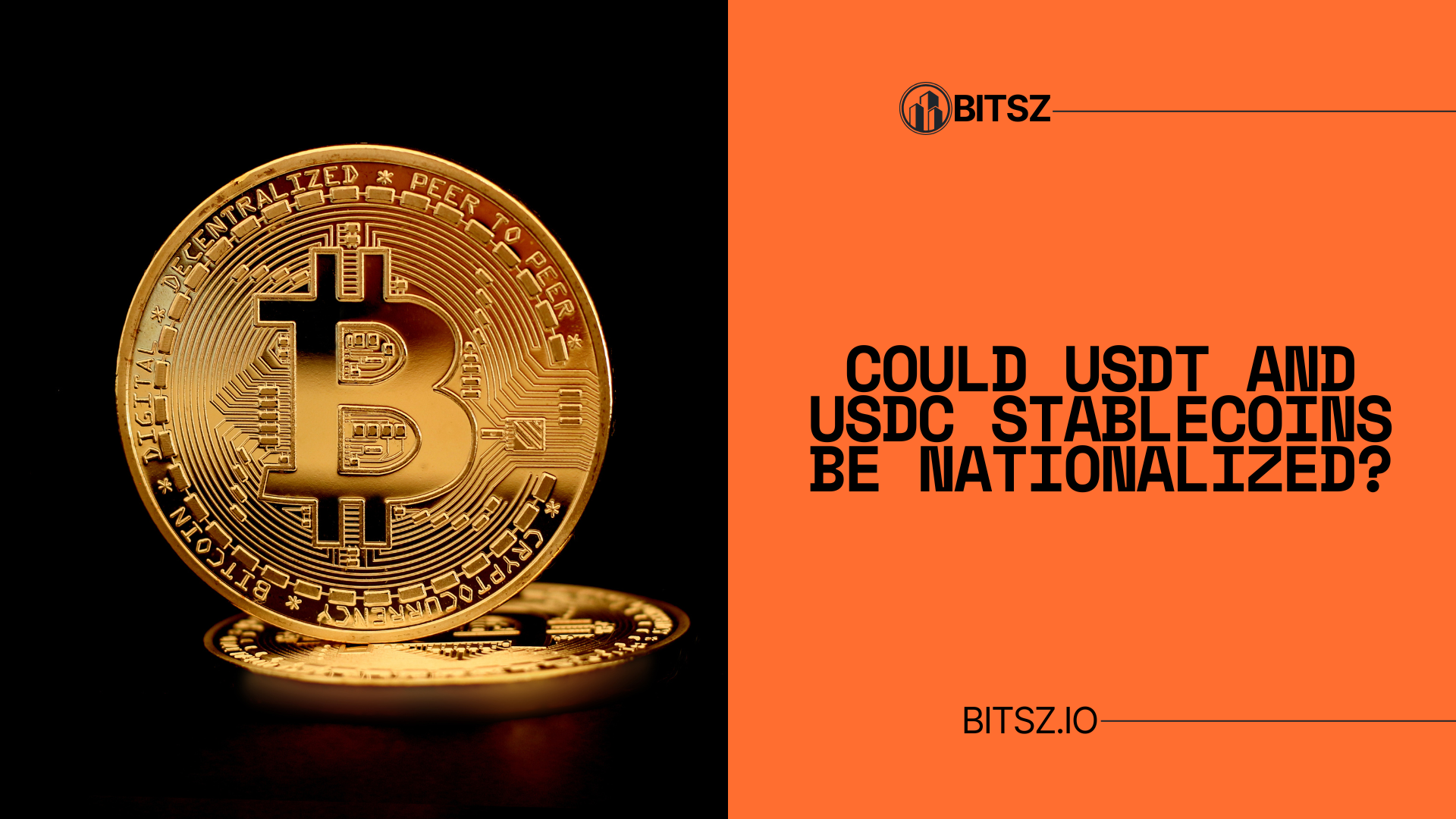
When people talk about the “nationalisation of USDT and USDC,” they’re not imagining soldiers seizing servers. They mean something more bureaucratic (and potentially more consequential): could governments push the world’s biggest dollar-pegged tokens into tighter state control — via domestic issuance rules, operational constraints, or mandatory reserve and custody requirements that make them act more like public money? ForkLog’s recent deep dive kicked off this exact conversation by sketching how huge stablecoin balances, concentrated market power, and fresh U.S. law together create a scenario worth watching.
What do people mean by “nationalisation of stablecoins”?
In practice, nationalisation here means a policy push that either forces global stablecoin issuers to operate under domestic charters (so the coin becomes effectively a domestically issued instrument) or compels critical parts of the stablecoin plumbing — custody, reserves, redemption rails — to be supervised by national authorities. It could include requiring domestic issuers or issuing branches for U.S. customers, higher transparency for reserve assets, or limits on foreign-issued tokens’ use in sensitive sectors (like government payments). ForkLog highlights the math behind the concern: USDT alone has ballooned to a market cap in the many tens of billions, making its systemic footprint impossible to ignore.
Why the timing? Regulation has changed the frame
Two trends collided in 2025. First, U.S. lawmakers created a clearer regulatory perimeter for stablecoins, which materially changed the legal landscape for dollar-backed tokens. Second, industry scale and new product launches have made stablecoins more entwined with finance and short-term government debt markets. Tether and Circle have both adjusted tactics — moving to launch U.S.-based variants or expand compliance programs — precisely because the new rules encourage domestic channels. Reuters reported that Tether is planning a U.S.-chartered stablecoin product as part of a broader push into regulated markets.
Put bluntly: it’s no longer a fringe idea that stablecoins should be treated like regulated liabilities or narrow-bank products. Policymakers are asking whether systemically large dollar tokens should operate under the same guardrails as deposit-taking banks or regulated payment firms.
How “nationalisation” could actually play out
- Domestic issuance requirement. Authorities could require that any stablecoin widely used for domestic payments be issued by a nationally licensed entity (or a domestically chartered subsidiary). That’s the path Tether appears to be preparing for with a U.S. product plan.
- Reserve & custody controls. Regulators might mandate that reserves backing stablecoins be held in insured, audited accounts in domestic banks or via approved custodians — shrinking the offshore leeway some issuers currently use. This would pull stablecoin reserve flows toward supervised institutions.
- Market access limits. Policymakers could limit which stablecoins are eligible for regulated market infrastructure (for instance, which coins exchanges can list as primary settlement units), effectively channeling domestic use toward compliant coins and away from foreign-issued variants.
- Public–private partnerships. Instead of taking over private issuers, governments could create incentives for domestic stablecoin issuance (e.g., privileged access to certain clearing utilities) — a softer form of “nationalisation” by design. Some analysts argue that stablecoins already amplify U.S. financial influence by routing dollar demand through token issuers that in aggregate hold massive Treasury positions.
Why this matters for Tether (USDT) and Circle (USDC)
Tether’s USDT is the market’s biggest dollar token; Circle’s USDC has pushed for strong compliance and bank partnerships. Both companies are already reacting: Circle expanded U.S. market efforts and transparency commitments, while Tether has signaled U.S.-oriented products and even major fundraising to buttress infrastructure. The practical upshot of further domestication: flows could migrate to coins that meet strict domestic standards — potentially benefiting issuers that pre-emptively comply while squeezing those that rely on looser offshore arrangements. Reuters’ reporting on Tether’s U.S. plans shows how issuers are positioning themselves ahead of tougher rules.
The macro angle: why states might welcome a closer role
There’s an economic logic here. Large stablecoin reserves often include short-dated government debt and cash-like instruments; in aggregate, stablecoin issuers can act like big, informal buyers of government paper. Some commentators frame this as strengthening dollar hegemony: tokenized dollars are another channel for U.S. influence. That logic gives policymakers both leverage and motivation to want clearer oversight — especially in a world of high debt and sensitive geopolitics. A recent CoinDesk analysis argued that stablecoins are quietly reinforcing U.S. national power by broadening dollar reach — a dynamic regulators won’t ignore.
Risks, trade-offs and what to watch
- Fragmentation vs. safety. Heavy-handed rules could fragment global liquidity (if each jurisdiction prefers its own domestic coin). But loose rules invite runs, opacity, and cross-border regulatory arbitrage. Policymakers will try to balance both.
- Market reaction. If domestic access privileges are narrow, markets may favor compliant coins — which could reward firms that invest in licensed issuance channels and penalize those that don’t. Recent market moves show both Circle’s gains in market share and Tether’s strategic fundraising as responses to the evolving environment.
- Innovation vs. control. Overregulation risks stifling product innovation (new payment rails, cross-border stablecoins), but under-regulation risks systemic fragility.
Conclusion
For most crypto users, this debate will feel abstract — but it could change everyday choices: which stablecoins are easiest to use on major exchanges, how quickly you can redeem tokens for fiat, or even which wallets support “domestically compliant” coins. Expect continued jockeying: issuers will seek regulatory cover, banks will compete to custody reserves, and governments will refine which coin behaviors they tolerate. ForkLog’s piece is a sharp reminder that the stablecoin debate has moved from technical papers to policy levers — and that the notion of USDT or USDC being effectively “nationalized” is no longer a wild thought, but a policy option on the table.